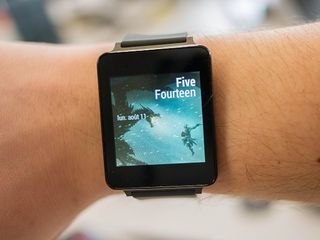Global Wearables Market To Grow 173.3 Percent In 2015, Includes AR/VR Headsets, Says IDC

According to IDC, a market research company, the global wearables market will continue to expand at a rapid pace and will see a growth of 173.3 percent this year alone. Last year, 24.2 million wearable units were shipped, and that number is expected to rise to 72.1 million this year. According to IDC's prediction, 155.7 million wearable units will be shipped in 2019.

IDC's research showed that it's not just "smart wearables" that are seeing a rapid growth, but "basic wearables," as well. These are sub-$100 wearables such as the Fitband or the Xiaomi bands that don't have any extra apps. In fact, this year, basic wearables will be shipped in a larger number of units (39 million expected) than smart wearables (33.1 million).
"The demand for basic wearables, those that do not run third party apps, has been absolutely astounding," said Jitesh Ubrani, senior research analyst, Worldwide Mobile Device Trackers. "Vendors like Fitbit and Xiaomi have helped propel the market with their sub-$100 bands, and IDC expects this momentum will continue throughout 2015."
Ultimately, it's the smart wearables that have seen a faster growth, and they are expected to lead the market in terms of units shipped as soon as next year. "Smart" wearables include devices such as smart watches (Android Wear watches, Apple Watch, etc.), but also AR and VR headsets, which also represent some kind of "wearable" categorization.
"We expect smart wearables, those capable of running third party apps, to take the lead in 2016," added Ubrani. "Smart wearables like the Apple Watch and Micosoft's Hololens are indicative of an upcoming change in computing, and the transition from basic to smart wearables opens up a slew of opportunities for vendors, app developers, and accessory makers."
The wearables market is still in its early days, and we're far from having established wearables features that people want, let alone an established platform. Competitors such as Google, Apple, Samsung, Microsoft and other smaller players are still throwing all sorts of wearable ideas at the market, hoping something will catch on with consumers.
They also do this to try to one-up each other and become the de facto wearable platform (at least for certain types of wearables) before the others get the chance to do it themselves. Many wearable products should either falter or change rapidly over the next few years until companies start to figure out what are the most sought after features in wearables and which can be discarded.
Stay on the Cutting Edge
Join the experts who read Tom's Hardware for the inside track on enthusiast PC tech news — and have for over 25 years. We'll send breaking news and in-depth reviews of CPUs, GPUs, AI, maker hardware and more straight to your inbox.
Follow us @tomshardware, on Facebook and on Google+.
-
kawininjazx I got the u8 smartwatch off ebay for $25 it does phones calls, music playback, pedometer, etc. and the battery is great. The high end android watches are nice, but they don't even have all those functions.Reply
Most Popular




